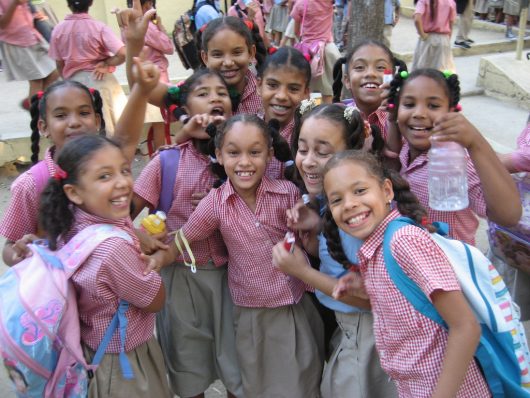Education in the Dominican Republic

Although the Dominican Republic has been known to have one of the most underperforming education systems in the world, efforts are being made to improve education in the Dominican Republic.
Education in the Caribbean nation is split into three stages: preschool, primary school and secondary school. Preschool, or nivel inicial (initial level), includes children from ages 3 to 6. Only the last year of preschool is compulsory. Primary school, or nivel básico, is compulsory for children aged 6 to 14 but is not strictly enforced.
Secondary school, or nivel medio, for students 14 to 18 is not compulsory. Students are awarded a bachillerato, or high school diploma, after completion and may go on to university.
Some of the issues facing education in the Dominican Republic include overcrowded classrooms, poor-quality facilities and outdated curriculums. Dominican law mandates that four percent of the GDP must be spent on education, but only about two percent of the GDP is invested in education in the Dominican Republic.
Teachers are paid so little that instructors cannot earn a living to support themselves or their families. This makes teaching an unpopular vocation in the Dominican Republic, resulting in very high student to teacher ratios in classrooms. Students don’t get the individual attention they need, and a large number of teachers have not fully mastered the material they teach.
About 40 percent of students drop out of school before eighth grade. One in four girls drops out of school due to pregnancy. While the literacy rate of the Dominican Republic is about 92 percent, studies have found that students who complete high school enter university at a sixth-grade reading level.
After teachers campaigned across the country to make education reform a national focus, all candidates running for president in 2012 promised to double the education budget if elected. President Danilo Medina and his administration have made efforts to improve education in the Dominican Republic since then, including building more schools and increasing the school day from five hours to eight hours.
However, these reforms are not fully effective without adequate teacher training and increased teacher salaries. There is still a shortage of teachers for schools that already exist in the Dominican Republic, and children only learn for a small fraction of the time they are in school. Students end up sleeping or talking to peers instead of studying, and some teachers do not know what to do with the extra classroom time.
These reforms are beginning to occur, with World Bank announcing in September of 2015 that the global financial institution will invest $50 million over five years to assist the Dominican Republic government’s education reforms. The loan will be used to train teachers and assess student learning in primary and secondary schools. The funds will also be used to improve preschools in order to increase school readiness, decentralize management of public schools and promote community involvement in education.
– Cassie Lipp
Photo: Flickr
